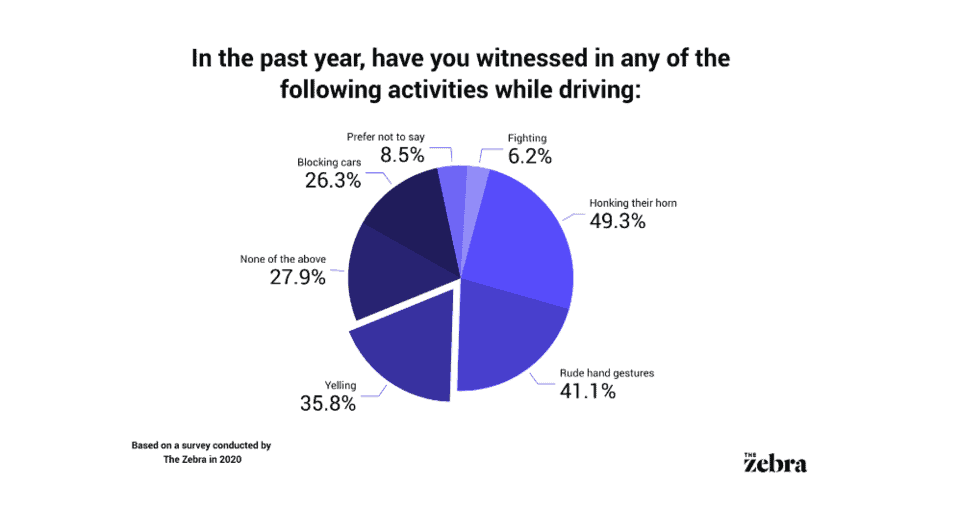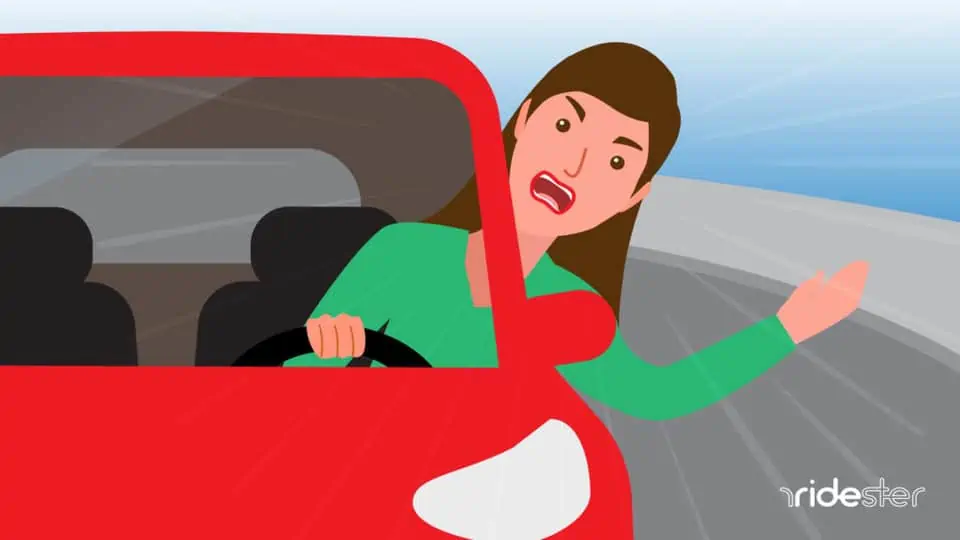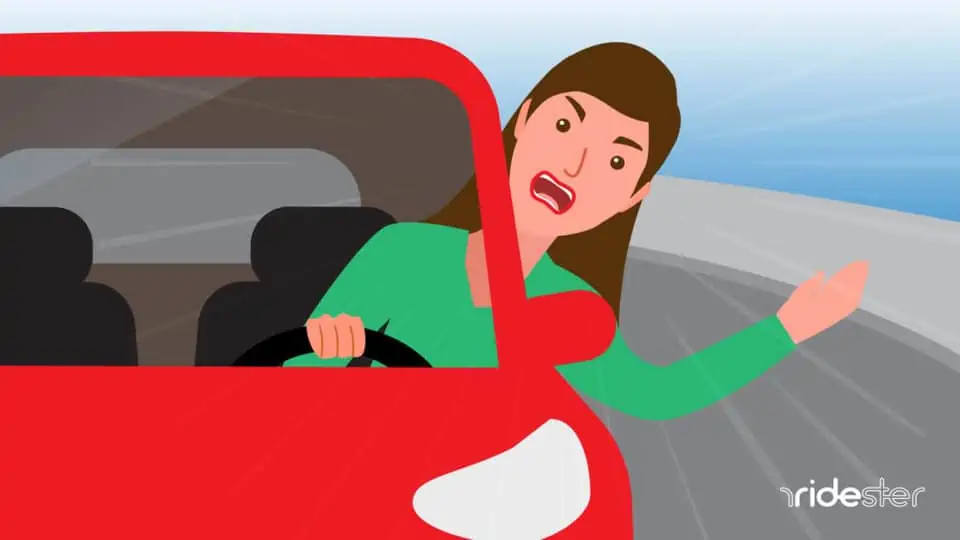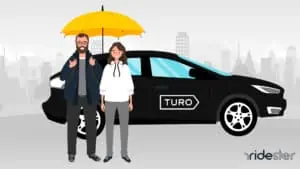Key Takeaways
- Road rage involves aggressive behaviors by drivers, including verbal and physical assault.
- It’s caused by stress, traffic congestion, and personal factors among others.
- Road rage can lead to accidents, injuries, and sometimes fatalities.
- Preventing road rage involves safe driving, managing stress, and avoiding retaliation.
Ever felt like exploding with anger behind the wheel?
You’re not alone. We’ve all had a moment of road rage while driving. From obscene gestures to yelling at other road users, this scenario, unfortunately, plays out all too often.
In fact, 92% of surveyed drivers said they’ve witnessed at least one incident of road rage or aggressive driving in the past year, and 89% said they’ve been a victim.

This article explores the causes of road rage, its potential dangers, and how to protect yourself and others to create safer roads for all users.
What Is Road Rage?
Road rage refers to the aggressive and often violent behaviors exhibited by drivers on the road.
These behaviors include both verbal and physical assault targeted at other road users, motorists, pedestrians, or cyclists to release frustrations or retaliate aggression.
The Dangers of Road Rage
The dangers of road rage extend far beyond dented fenders and harsh words. Below are some of its consequences.
- Road Crashes: Aggressive driving behavior associated with road rage is a major cause of road accidents. According to the National Highway Traffic Safety Administration (NHTSA), road rage causes 25% of fatal car crashes involving drivers aged 40 to 54.
- Vehicle Damage: Even if it doesn’t lead to a serious accident, road rage can damage your vehicle. This damage can range from minor scratches and dents to massive wreckage, leaving you with hefty repair bills or replacement costs.
- Severe Injuries: Road rage also leads to life-threatening injuries to involved drivers and other road users. According to SafeMotorist, a total of 12,610 injuries and 218 murders have been attributed to road rage over seven years in the U.S.
- Death: In extreme cases, road rage can lead to death. This Everytown Research shows that in 2022, someone was shot and killed in road rage incidents every 16 hours.
What Causes Road Rage?
In a survey of 2,388 American drivers, 52% said the most frustrating thing another driver can do is cut them off.
While that may be the leading cause, road rage can also stem from other off-the-road factors such as stress and individual traits.
Here are some of the underlying factors that can lead to road rage:
1. Traffic Congestion
Getting stuck for too long in heavy traffic can trigger road rage. Those incessant stops in a traffic jam can heighten your anger.
Likewise, delays from road work and accidents can be frustrating, especially when you need to reach your destination on time.
2. Stress
Stress or emotional strain can make anyone a rager behind the wheel. Being overwhelmed by work or other factors can build up stress, and that can make you rant over the slightest inconvenience on the road.
Lack of sleep can also get your stress level up, which in turn reduces your tolerance to road and traffic frustrations.
3. Tardiness
Drivers who feel like they’re running late for a meeting or appointment often embrace aggressive driving behaviors. They often neglect road signs and end up harming others.
On the other hand, if you’re in a hurry, any slight delay by the actions of other road users can cause you to lose your calm.
4. Driving Under the Influence
Driving under the influence of drugs or alcohol can lead to aggressive driving without the driver being aware. This makes them disregard their safety and that of others.
5. Severe Weather
Extreme weather conditions, such as intense heat, heavy rain, and snowfall, can also contribute to road rage. Driving in this condition could make you more irritable than usual.
6. Mental Issues
Drivers with underlying mental health issues, such as anxiety disorder and intermittent explosive disorder, are more prone to road rage. These drivers may not be able to control their anger.
The 6 Most Common Forms of Road Rage
Motorists act out road rage in different styles. Here are some of the most common forms in which road rage manifests:

1. Verbal Aggression
Drivers sticking their heads out of the car window to hurl abuse at others is a far too common sight, especially during busy commute hours.
Verbal aggression involves using harsh language on other drivers or yelling at them in response to perceived provocations. It’s often the precursor for some other forms of road rage.
2. Tailgating
Tailgating is also one of the most common forms of road rage we see daily. A tailgater follows the vehicle in front closely with the intention of mounting pressure on the driver to change lanes or move faster.
Tailgating may cause the target driver to make mistakes and result in a collision with other vehicles.
3. Excessive Honking
While honking is a standard means of communication on the road, road ragers also use it to express annoyance. Nearby motorists perceive excessive use of horns as aggressive driving behavior.
4. Offensive Gestures
Motorists also use non-verbal rude gestures, such as the infamous middle finger, to express anger.
Stern faces and head shaking are other ways they show displeasure towards others, which, if met with a similar response, can lead to confrontation.
5. Physical Confrontation
In extreme cases, some drivers get out of their vehicles to confront others. This form of road rage is the most severe, as it could escalate into violent assaults and result in serious legal consequences for those involved.
6. Cutting Off Others
Cutting off involves abrupt change of lanes or swerving in front of another vehicle without proper signaling. The intent is always to block the other driver from making a desired move in traffic or impede their speed.
The other driver may get enraged and respond with a similar gesture. This act put the safety of the drivers and other road users at risk.
Suggested: How to be a better driver
How to Prevent Road Rage
While road rage can’t be 100% eradicated, there are steps you can take to reduce its occurrence. Here are three tips to help you prevent road rage:
1. Practice Safe Driving
To not be an aggressor yourself, you need to first be a better driver. Follow safe driving practices such as maintaining a safe following distance.
Avoid sudden lane changes, and ensure you use your turn signal. Don’t take the right of way from other drivers except if given to you.
2. Overlook Aggression
If you find yourself as the victim, resist the urge to retaliate, as this will only escalate the situation. Don’t return gestures. Always avoid eye contact with the aggressive driver.
If you’re the one who accidentally cut someone off or made a wrong turn, apologize with a polite wave and focus on your driving.
3. Reduce Your Stress
If you always get pressed for time in the morning, that early morning rush can induce stress in your day and may trigger the rager in you.
Besides getting adequate sleep, planning your day can significantly reduce stress levels. Plan your route to avoid traffic jams and set out to work early to avoid stress-inducing rush.
Tips For Letting Go Of Road Rage
If you find that you have frequent bouts of road rage, there are various ways to combat the emotion while working to eliminate it completely.
Some strategies may be better suited for certain individuals, while others may find pieces of each coping mechanism helpful.
Give Yourself Plenty of Time
The feeling of being rushed and the possibility of being late for an important meeting or event can increase the likelihood of having road rage.
Planning ahead and allotting appropriate travel time to reach your destination can help decrease the chances of road rage.
Listen To Calming Music
If you are easily triggered by events during your daily commute, turning on music that you find most calming can help combat your emotions.
Whether it is classical, nature sounds, or something more to your liking, you can decrease the chances of having an overly emotional reaction to events while listening to something that brings you calmness.
Breathing Exercises
Many studies have shown that breathing exercises are beneficial in decreasing stress and anxiety levels.
Learning a few that you can turn to while driving in stressful situations can make a big difference in how frequently road rage occurs.
Don’t Retaliate
Taking every opportunity to allow unpleasant instances between drivers to wash away from your emotions instead of retaliating can make a big difference when fighting the urge to have road rage.
Whether calling a friend on hands-free phone features or turning on music to listen to, taking every step possible to avoid retaliation will pay off greatly in the long run.
Treat Underlying Psychological Conditions
If you find yourself struggling with a quick temper, anger management issues, or you are currently going through circumstances in life that are causing you distress, it is best to have those treated appropriately.
Having these emotions under control will extend to any road rage issues you may experience as well.
What if Somebody Else is Road Raging Against You?
If you find yourself in the middle of a road rage incident, here are some things to do:
- Try to stay calm: It can be difficult, but road rage is a reaction to stress and anger. The more calm and collected you can be, the better chance you have of diffusing the situation.
- Avoid making eye contact: This can escalate the situation and make the other driver even angrier.
- Don’t respond with gestures: This includes honking your horn, giving the finger, or making any other hand gestures.
- Move away from the aggressive driver: If possible, change lanes or turn off at the next exit.
- Call 911 if necessary: If the other driver is following you or trying to force you off the road, call 911.
Wrapping Up
Now that you know what road rage is and its potential causes, you can identify its triggers and take proactive steps to prevent it. Always remember that the road is a shared space. And it’s better to be safe than sorry, they say.






